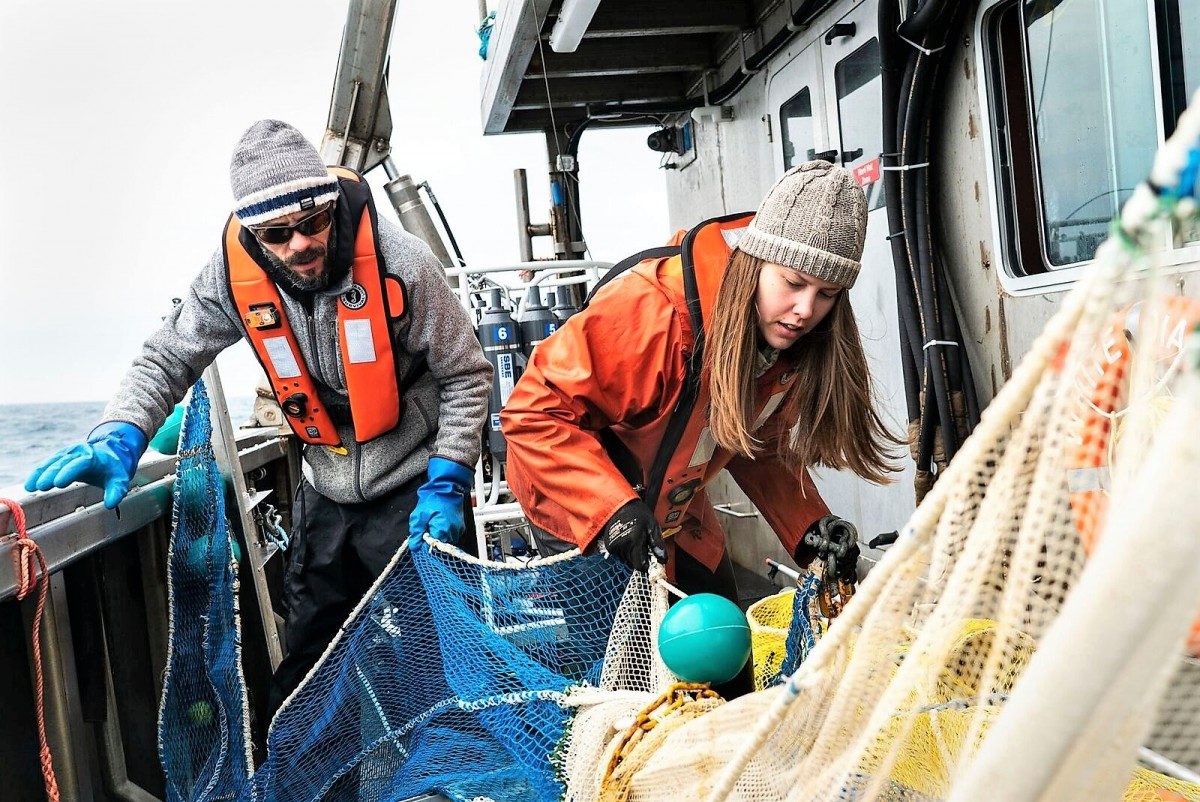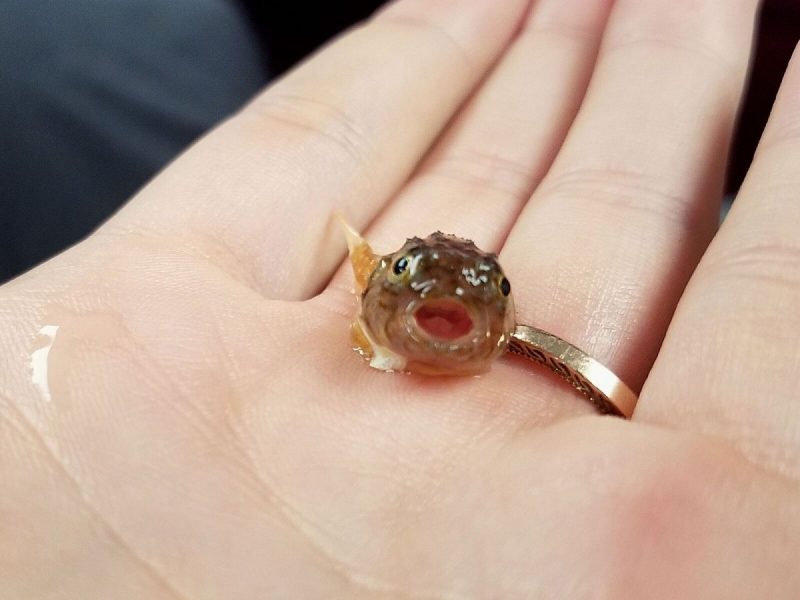
Jasmine onboard the R/V William Kennedy. // Photo credit: T. Surian
Trading trenches for transects: An archaeologist’s experience at sea
As somebody who normally spends their time digging in the ground, it’s not very often that I find myself surrounded by water for two and a half weeks. Strangely enough, that is precisely how I’m spending my time this August. I am writing this aboard the R/V William Kennedy, which is currently anchored in a sheltered bay off the southeast coast of Southampton Island. Gale force winds will have us hiding out here for the day. Luckily, this once fishing vessel has been outfitted for arctic science research – the first of its kind in this region. I am one of fourteen science crew on board, each of us contributing in our own way to the Southampton Island Marine Ecosystem Project.
I am in the first year of my Masters program in the Department of Anthropology at the University of Manitoba. My research is focused on zoo archaeological investigations of Southampton Island, in which I will be analyzing animal remains that have been excavated from archaeological sites located at and around Native Point in the southeastern region of the island. As the material for my project had already been collected in the 1950s and 1970s, I knew the majority of my research would take place in a lab. When an opportunity arose to lend a hand with sampling on this expedition with Associate Professor CJ Mundy and his team from the Centre for Earth Observation Science, I jumped at the chance. I knew that I would be out of my element, but I also knew that this would be a once in a lifetime experience to be on board an arctic research vessel. With an urge to get my hands dirty once again, I embraced the opportunity for a different kind of field season.
Very different.
Let me stress that I love nature, but my line of work leaves me handling animals that have been dead for thousands of years. So when one of our science nets came back with our first live sample, I was giddy with excitement. Up close we got to see what was hiding in the dark waters below, which included sculpin fish, shrimp, sea cucumbers, and crabs, to name a few. My favorite friend from the sea has to be the lumpsucker. Have you ever seen such a friendly looking fish?

A lumpsucker fish caught by an exploratory trawl in the waters off of Southampton Island, Nunavut. Photo credits: T.Surian
Fortunately, not all of the wildlife was hiding below the waves. Although we haven’t caught sight of a narwhal, which I was really looking forward to, we did get to view countless walrus basking on Walrus Island. A few of us were even treated to the sight of a polar bear being chased away from town by a couple of locals at five o’clock in the morning, back dropped by a brilliant bright orange sunrise.
Another great perk about this project is being able to make connections between our research and the local community. David, our Inuk observer, joined us from Coral Harbour and shared with us knowledge about his community and the surrounding regions. This provided a great opportunity to learn about what local Inuit are currently hunting, how they process their food, and what they prefer to eat. With a big smile on his face, David told me that beluga was his favorite, and during a recent trip to shore we met with Inuit hunters who were hauling in a walrus from the day’s hunt. I’m eager to relate these experiences with my own archaeological analysis of the region.
Since my research began in January of this year, I’ve spent a lot of my time thinking about the past and considering the relationships that past inhabitants of this island had with animals hundreds and even thousands of years ago. I feel fortunate to be given the opportunity to connect that past with the present. Although I have yet to begin the analysis stage of my research, I am already able to see how my work will fit into the greater scheme of this project. As a varied group of scientists, including biologists, oceanographers, geomorphologists – and one slightly out of place archaeologist – our research reaches around the island, to the ocean floor below it, to its recent and distant past, and, perhaps most importantly, to the communities that it will impact most. It has been an incredible experience to be a part of this expedition and to be able to contribute to it in my own way, whether that’s sharing my research with other scientists on board or simply sorting lumpsuckers from sculpins.
Jasmine Liesch is a Masters student affiliated with the Centre of Earth Observation Science (CEOS) at the University of Manitoba. Her current research involves investigating subsistence patterns of Palaeo-Inuit and Neo-Inuit hunter gatherers on Southampton Island, Nunavut. Her work is funded by Marine Environmental Observation Prediction and Response Network (MEOPAR) and POLAR Canada.






